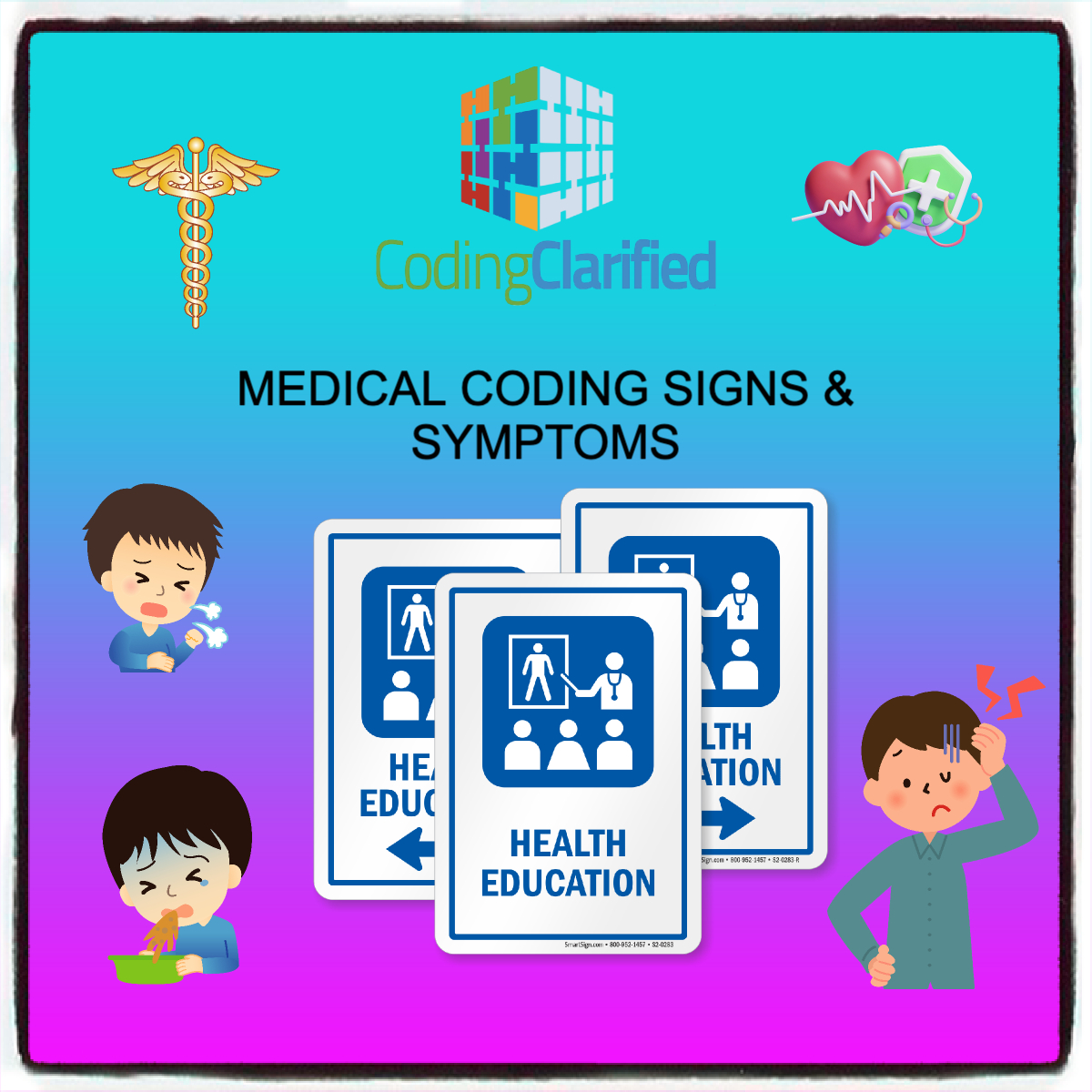Signs and Symptoms in Medical Coding
In medical coding, signs and symptoms can be used to accurately reflect a healthcare encounter when a definitive diagnosis has not been established. Some other situations where signs and symptoms may be the best choice include:
- When there isn’t enough clinical information to assign a more specific code
- When unspecified codes are the best representation of what’s known about the patient’s condition
- When signs and symptoms are not routinely associated with a disease process
Code the condition to the highest degree of certainty, such as symptoms, signs, or abnormal test results
- Report specific diagnosis codes when they’re supported by medical record documentation and clinical knowledge
- Code each encounter to the level of certainty known for that encounter
- If signs and symptoms are associated with a disease process, don’t assign codes for them unless instructed otherwise
In medical coding, accurate coding of signs and symptoms is essential for proper diagnosis, treatment, and billing. Here’s a detailed overview of how signs and symptoms are handled in medical coding:
Definitions
- Signs: Objective findings that can be observed and measured by a healthcare provider. Examples include fever, rash, or elevated blood pressure.
- Symptoms: Subjective experiences reported by the patient, such as pain, fatigue, or dizziness.
Coding Signs and Symptoms
In the medical coding process, signs and symptoms are recorded using the International Classification of Diseases (ICD) codes. Here’s how they are handled:
- ICD-10-CM Coding
- ICD-10-CM (International Classification of Diseases, 10th Revision, Clinical Modification) is the coding system used to classify and code diagnoses, symptoms, and procedures.
- Symptoms and signs are coded when a definitive diagnosis has not yet been established. For instance, if a patient presents with chest pain but has not yet been diagnosed with a specific condition, the coder would use codes for the symptoms, such as R07.9 (Chest pain, unspecified).
- Etiology and Manifestations
- When symptoms are a manifestation of a specific underlying disease, coding should ideally reflect the underlying condition rather than just the symptoms. For example, if a patient has diabetes (E11) and presents with diabetic retinopathy (H36.0), the coder should use the code for diabetic retinopathy and the code for diabetes.
- However, when the underlying condition is not yet determined or is not explicitly diagnosed, coding the symptoms is appropriate.
- Exclusions and Guidelines
- ICD-10-CM includes specific guidelines for coding signs and symptoms. For instance, many codes are categorized under chapter-specific guidelines (e.g., Chapter 18: Symptoms, signs, and abnormal clinical and laboratory findings, not elsewhere classified).
- Some codes have exclusion notes that indicate when symptoms should not be coded separately if they are a direct result of a diagnosed condition. For example, if a symptom is directly related to a chronic condition, the coder should prioritize coding the chronic condition.
Examples
- Fever
- If a patient has a fever without a known cause, the code R50.9 (Fever, unspecified) might be used.
- If the fever is due to an underlying condition, such as a urinary tract infection (N39.0), the coder should code for the infection instead of just the fever.
- Headache
- For a headache with no specific diagnosis, the code R51 (Headache) is used.
- If the headache is related to a specific diagnosis like a migraine (G43), the coder should use the code for migraine.
- Cough
- For an unspecified cough, the code R05 (Cough) is applicable.
- If the cough is associated with a condition like chronic bronchitis (J42), the coder should use the code for bronchitis.
Special Considerations
- Chronic Conditions: For chronic conditions with recurrent symptoms, coders should prioritize the chronic condition code. For example, if a patient with chronic obstructive pulmonary disease (COPD) presents with a cough, the primary code should reflect COPD (J44), with an additional code for the symptom if needed.
- Acute vs. Chronic: Coding may differ for acute versus chronic presentations of symptoms. For instance, acute sinusitis (J01) might be coded differently from chronic sinusitis (J32).
- Combination Codes: Sometimes, a single combination code can represent both a symptom and an underlying condition, such as in certain types of diabetes with complications.
Ask yourself these questions when trying to determine if the symptom code should be added:
- Has a definitive diagnosis been established for the etiology of the symptom?
- Is the sign/symptom always present with the disease it is associated with?
- Did the sign/symptom require additional workup and or treatment other than the routine treatment for the associated disease?
In medical coding, signs and symptoms are carefully documented and coded to ensure accurate representation of a patient’s condition. Coders must navigate complex guidelines to determine when to code symptoms directly and when to focus on the underlying condition. Accurate coding is crucial for proper diagnosis, treatment, and billing, ensuring that patients receive the appropriate care and that healthcare providers are appropriately reimbursed.
https://www.aapc.com/blog/29696-icd-10-cm-coding-tips-signs-and-symptoms/
https://hiacode.com/blog/education/icd-10-coding-tip-coding-and-reporting-of-signs-and-symptoms

